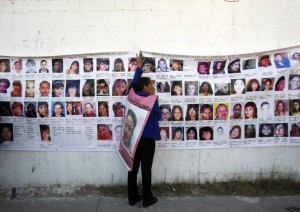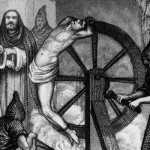 My friend Gerald called me about his recent trip down to Ciudad Juarez for the papal mass. His interest in the event was noteworthy because it is certainly Pope Francis that has overcome Gerald’s decades-old grudge match with the Church hierarchy. He is on the verge of taking up the rosary again, I suspect.
My friend Gerald called me about his recent trip down to Ciudad Juarez for the papal mass. His interest in the event was noteworthy because it is certainly Pope Francis that has overcome Gerald’s decades-old grudge match with the Church hierarchy. He is on the verge of taking up the rosary again, I suspect.
But this was not a light-hearted phone call. Gerald shared a ride down with a couple of religious sisters he knows in the Ruidoso, New Mexico area where he now resides. He only knew a little about Juarez before the trip, he explained, but the sisters filled him in as they rode along together.
Everyone knows about the drug cartels in Mexico and their casual violence. But there’s more to know, the sisters explained. The Holy Father is coming to Juarez for a reason besides its border location, they felt sure. Juarez is the hell on earth for which the legal term femicide was invented. Every year, some 2,500 Mexican women die of gender-related violence. The National Citizen Femicide Observatory, or OCNF, says at least six women are targeted and killed every day in Mexico. Of those, less than a quarter are investigated. Of those investigations, fewer than 2 per cent lead to a sentence.
Since 2006, Human Rights Watch estimates some 26,000 Mexican women have gone missing, with few in the way of solved investigations. The authorities, for their part, try to blame the effects of drug use, the sex trade, or simply undercover disappearance somewhere in the States. Numerous groups of women activists–family members–aren’t buying it.
In June 2012, the bodies of 18 women were discovered in a mass grave in Juarez, the sisters went on. Because their bodies were hacked to death so violently, it took authorities months to identify the women.
Most of the women who have been murdered or disappear share a striking strain of similarities: they are young, thin, poor and often indigenous workers at one of the city’s large maquiladoras, which manufacture cheap products for export abroad. Why kill these poor women? Says the Council on Hemispheric Affairs:
Some people see the femicides as a product of a cultural image of women in Latin America. A female worker in a maquiladora is can be looked upon as a form of variable capital; the labor value of a Mexican maquiladora worker declines over time because, according to her managers, her value as a worker is used up after years of endless, exhausting hours of factory work.
Some activists play down the gender emphasis in these crimes, noting that even more men have been murdered or have disappeared during this time period. And yet this factor seems impossible to deny.
Gerald knew very little about this savage history until just before arriving in Juarez. As he approached the huge stage set up next to the border fence and the crowd of 200,000, he told me, he could feel the unresolved grief and the spiritual yearning mingling somehow in the crowd. He began weeping, overcome at finally seeing up close the both the faces of these families and (at a great distance) the figure who had come to offer them mercy and hope. How could such things happen in this world, he asked me, crying again. I could not say. We could only agree: this Year of Mercy came none too soon.












